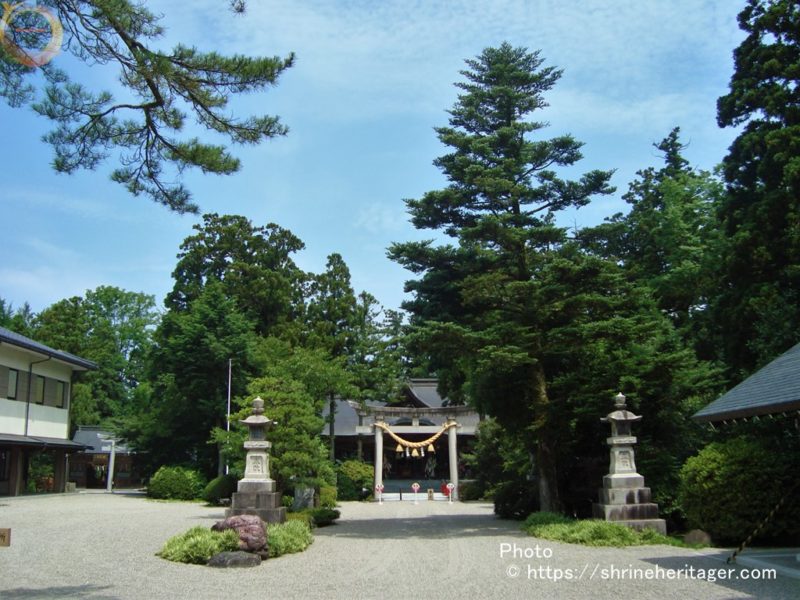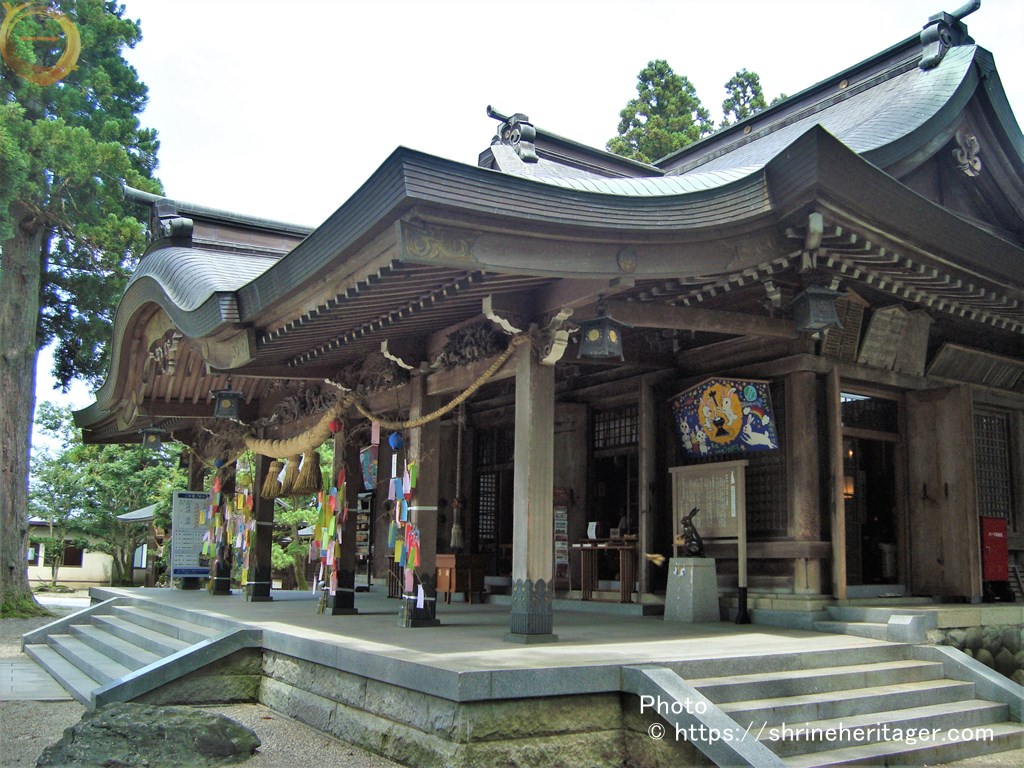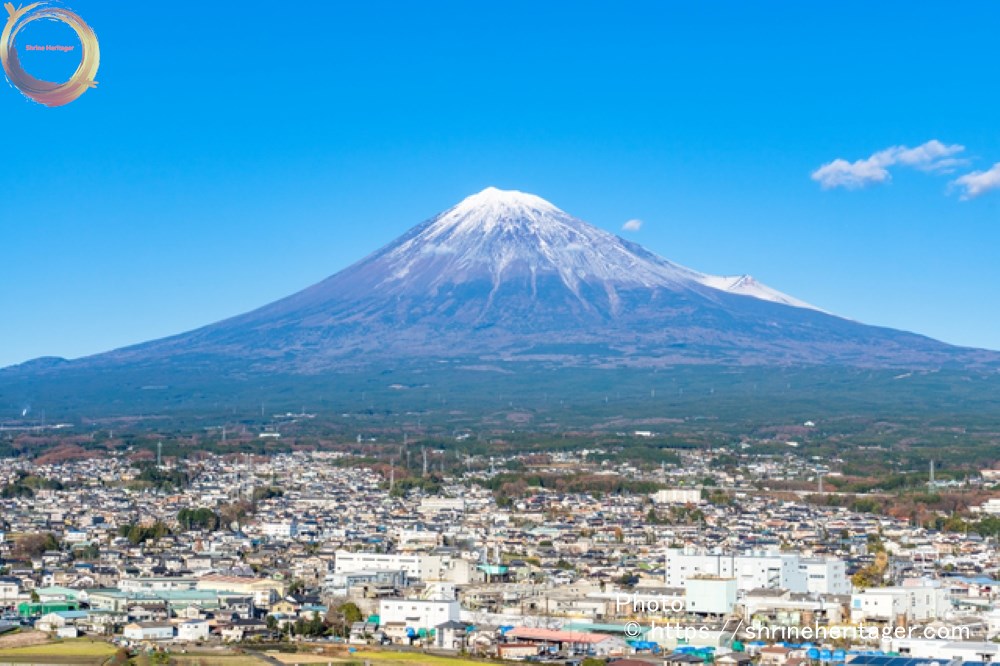Takase Shrine is prestigious as Ichinomiya in"越中国" , and the deity of the shrine enshrines (main power of the great power). There is also the Takase ruins, which is said to be the site of our company, and it is presumed that it is a sacred place during the Yayoi period(Around the 10th century BC to the middle of the 3rd century AD) when the Agricultural culture grew.
目次

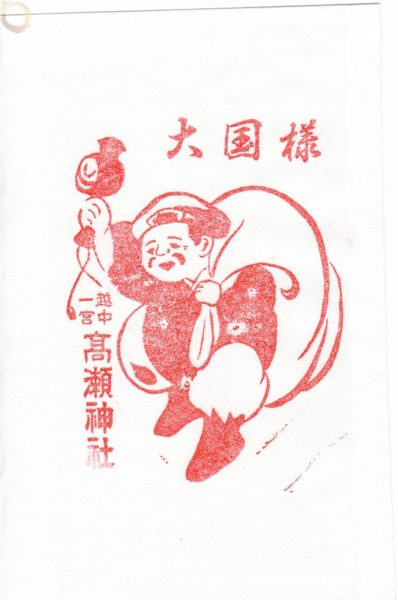
1.Introduction (Introduction)
The official name of this shrine and how to be called The present address and map I will introduce the history of the god and the shrine enshrined.
[Shrine name]
高瀬神社(takase shrine)
(Takase Shrine)
[Common name]
[Location]
291 Takase, Nanto City, Toyama Prefecture
[Google Map]
[God's name to pray]
《主》大己貴命(大国主命)(okuninushi no mikoto)
《配》天活玉命(ameno ikutama no mikoto)
五十猛命(itakeru no mikoto)
越中式内社 三十四座
礪波郡内氏神
相殿 神明宮《主》天照皇大神
相殿 風宮 《主》級長戸辺命
相殿 天満宮《主》大宰府天満大神(菅原道真公)
[God's Great power]
(大己貴命)~福の神・縁結びの神・国土開拓・農耕の神・医薬医療の神
(天活玉命)~無病息災・延命長寿の神
(五十猛命)~農林殖産・交通安全・厄除・病気平癒の神
[Rules of dignity]
・『延喜式神名帳(engishiki jimmeicho)』所載社
・ 越中国一之宮
・ 別表神社
[Beginning of history]
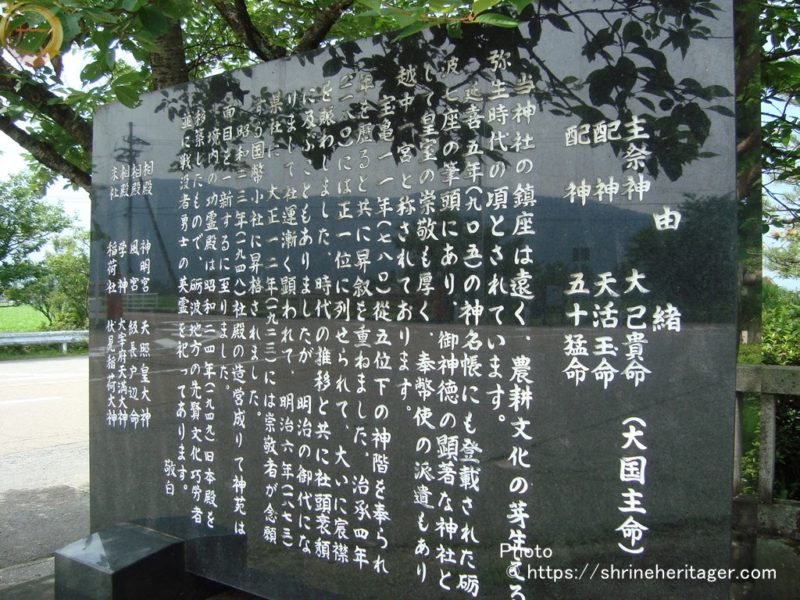
Gochinza is said to be in the distant past of Gods, and also in the 11th year of Emperor Kageyuki.
It is also said that the shrine god dedicates to the guardian deity in this area when the land of the northern land is cultivated, and after it has become a country, it is also used to calm down its own soul and return to Izumo. , Has been worshiped as Etchu Ichinomiya.Not only the people of 越中国, but also the reverence of the Imperial Court,
he was sent a royal envoy to the Emperor of the Tenmu Emperor,
光仁天皇の宝亀11年に従五位、
3rd place in the 1st year of the Emperor Bunde's confrontation, and the same year Allows scepters for prayers and celebrations.
In the first year of 貞観, he was in the third place, and then progressively progressed.In addition, since it was addressed to many shrines and gardens and to the royal territory, it is possible to remember the grandeur of the past by the place names remaining in the vicinity, such as Mikoya Tate, Kamakuraya Tate, Omiya Jida, and Mikobatake.
During the Warring States period, the shrine was devastated and it was in a state that it could not be seen, but it was promoted to the prestige of the Maeda feudal lord and was gradually promoted, and it was promoted to a prefectural shrine in 1868 and a Kokusei shrine in 1912. ..
In 1912, an ambassador of the Regent's Palace visited the temple, and in 1926, His Majesties the Emperor consecrated the "God's Path," in 1945, in 1945, in 1945, and in 1945. At the end of the war, there was a royal envoy.
From the official website
[History]
The deity of the deity of the shrine, the deity of the deity of the shrine, is enshrined in the main deity of Oguni priest (Takashi Omi), and enshrines the enemies of life and fierce life.
It is a company that enshrines the gods of the Ujiko and the gods of the 33rd stage company in the Enki ceremony in 越中国. It is a god of great power, marriage, land reclamation, and farming.
天活玉命 is a god of natural life, disease-free life, and longevity.
五十猛命 , the god of industry.Goshaden The shrine of this shrine, where the staggered gable and the gable gable are harmoniously erected in the giant tree forest, is scheduled to be erected for several years from 1965, construction work has begun,
and foundation work has ended August 1945 At the end of the war, GHQ (Far East Army Command) commanded the construction to be stopped by state funds, the appearance of the ancient times disappeared, and the number of people worshiping was almost zero. People donated a large amount of money and a hundred-year-old name tree, and they were supported by the passion for building the shrine. In 1922, the main shrine (Ryuzo) and in the following year (Showa 23), the worship hall (Irumabaya construction) In 1987, the Karafufu no worship hall was completed, and we came to see the complete completion of your shrine, which recalls the history of Zhenza 2000.Ujiko Sokeisha Ujiko is currently over 100 units in Takase, Inami-cho, but people from 11 ancient villages in ancient times had the custom of taking a break from work during the annual festival in spring and autumn.
Today, worshipers from Hokkaido, Koshinetsu, and northern Kanto are worshiped, not to mention the whole prefecture, due to the excitement of the gods.Treasure Hall and Otorii Completed in November 1984 by the donation of Takeshi Iwakawa, who lives in Isaba City, and in 60, the Torii Nishida, who lives in Oyabe City, donated the Otorii on the approach to His Majesty the Emperor 60 It was constructed over a two-year period as an annual celebration commemoration project.
The treasure hall stores the sacred treasures that have been passed down to our shrine since ancient times
In addition, Otorii houses the great honors that were copied in the great honor ceremony on June 30, and is purifying the sins of the people who pass under the great torii.It is a building that was relocated from the Jingu (Geku) under the control of Ise Jingu in 1965.
The water basin in the Tesuisha is a sacred place for washing, made of natural stones transported from the upper stream of the Tadami River in Niigata Prefecture. The letter "Water God" is engraved on the back of the natural stone.Kōreiden Adjacent to the shrine is the Gōreiden, which is a shrine where a total of 6400 pillars of spirits were enshrined in 1948, including those who were embarked from the Minami district and became the spirits of the defense of the country on the battlefield. .
The main shrine is the former main shrine of this shrine, which was built in 7 years (about 159 years ago) in the Tenpo era, and has done the best of Inami sculpture, and has been designated as a cultural property.Saikan This is the newest building of this shrine completed in August 1991.
Saikan is a building where the priests who serve the festival attend the temple before they serve the festival to cleanse the mind and body. This building was built with the support of Mr. Tosaku Nishida, President of Goldwin, who lives in Oyabe City and the company.The shrine office and precincts were built in commemoration of the year 1965 and the year 2000, and it is a modern office building (660 square meters) of Japanese and Western eclectic structure. In recent years, the interiors of conference rooms have been refurbished, and they are being used for weddings and other occasions.
In the precincts, a hundred-year-old giant cedar forest talks about past history, and the voices of wild birds echo in the forest throughout the four seasons to delight worshipers.
The young trees of the precincts of the precincts were planted by worshipers from all over the country.The history of Gozinza The date of Gozinza is unknown, but it is said to be the era of Emperor 景行天皇.
In the era of Emperor 天武天皇, a royal envoy was sent to the shrine, and then Emperor 光仁天皇 was in fifth place in the 11th year, and in the first year of Emperor 清和天皇, he was ranked third in the first year and then in the fourth year of the court. It seems that it has become a royal territory with many manor houses.
You can recall the historical names of the shrine's place name, Tsukasa Omiya, Mikoba, and Kakugakuin.
Entering the Sengoku period, the prosperity of ancient times went to Izuko, the head of the company was devastated,
and the humanity was disturbed. In the Edo period, Divine power was revitalized by the honorable protection of the lord of Kaga
and became a prefectural shrine in 1868
and became a shrine in the Taisho 12 (Taisho 12).
Then , at the end of the war in 1945, there was a visit from the Imperial Envoy to pray for the happiness of the people.
Many worshipers now worship at festivals and Shinto rituals that change through the seasons, beginning with Hatsumode."National Shrine Festival Comprehensive Survey (1995)" [Shrine Head Office]
[Other decisions within the preciss]
・高瀬稲荷社《主》宇迦之御魂大神
・功霊殿 《主》護国の英霊・開拓功労者
スポンサーリンク
Preliminary knowledge of this shrine (Preliminary Knowledge of This Shrine)
This shrine has a long history.
『延喜式神名帳(engishiki jimmeicho)The two volumes that are regarded as important among all 50 ritual- style scrolls created by the Imperial Court during the middle Heian period are called " engishiki jimmeicho " (edited in December 927). Approximately 1100 years ago, the name of "2861 company" and the number of gods enshrined there are listed in the list of government offices (shikinaisha) nationwide.
[Enki-shiki Shinmeisho] (engishiki jimmeicho) The shrine record was completed in December 927 AD.
[Old Administrative Division] (Old administrator district)
(神様の鎮座数)北陸道 352座…大14(うち預月次新嘗1)・小338
[旧 国 名 ](old county name)
(神様の鎮座数)越中国 34座(大1座・小33座)
[旧 郡 名 ](old region name)
(神様の鎮座数)砺波郡 7座(並小)
[名神大 大 小] 式内 小社
[旧 神社名 ] 高瀬神社
[ふ り が な ] (たかせの かみのやしろ)
[How to read] (takase no kamino yashiro) https://www.digital.archives.go.jp/DAS/meta/listPhoto?LANG=default&BID=F1000000000000004146&ID=M2014101719562090086&TYPE=&NO=画像利用
国立国会図書館デジタルコレクション 延喜式 刊本(跋刊)[旧蔵者]紅葉山文庫

[Otaky Point] (Points Selected by Japan Otaku)
I will introduce the preliminary knowledge that you will be interested in this shrine from a otaku's point of view.
御祭神 天活玉命(ameno ikutama no mikoto)について
あまり聞きなれない神の名前ですが
別称は「活魂命・活玉命・伊久魂命・生産日神・生霊神・天神玉命」とあります
『日本書紀(nihon shoki)』 is said to be「生霊神(ikutama no kami)」
The father god is said to be the "high soul life" or "soul life" of the three gods of creation,
and is important as a "production day god生産日神 (iku musuhi no kami)" in the "8 shrine 八神殿(temple that enshrines the 8 gods of the emperor guardian)". It is worshiped as「むすひの神」 "Musuhi no God"
In『先代旧事本紀』 "Previous Honki Honki", it is said to be one pillar of the 32 gods who accompany 饒速日命Rahabichi Also,
in the family tree related to Kamo and Katsuragi Kokuzo, he is positioned as the grandfather of 賀茂建角身命(陶津耳命).
八神殿 See also the article about Hachijin
スポンサーリンク
Visit the Shrine (Pray at the Shrine)
I introduce the state when I visited this shrine.
Approximately 8.4km from Tonami Station via R156 About 15 minutes
I will sit in the countryside of Inami
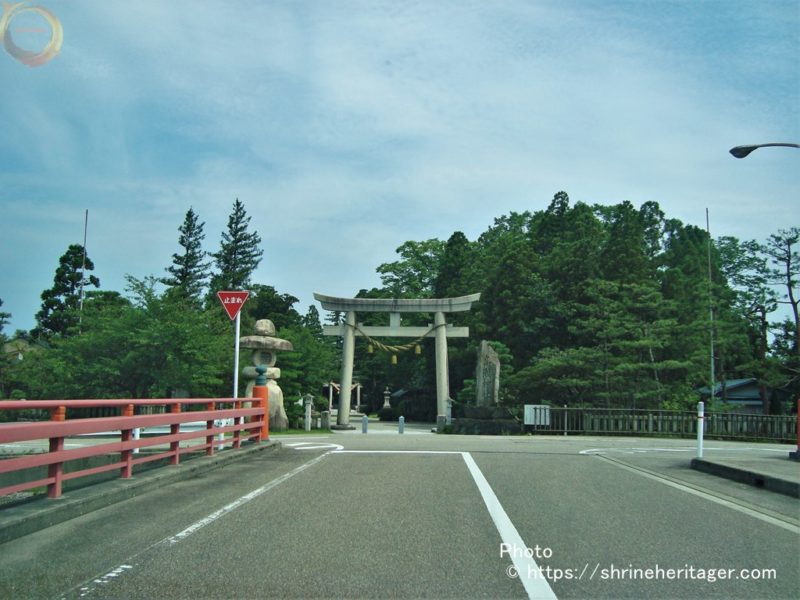
Nino Torii is built in front and the parking lot is on the left
Arrived at 高瀬神社(takase shrine)
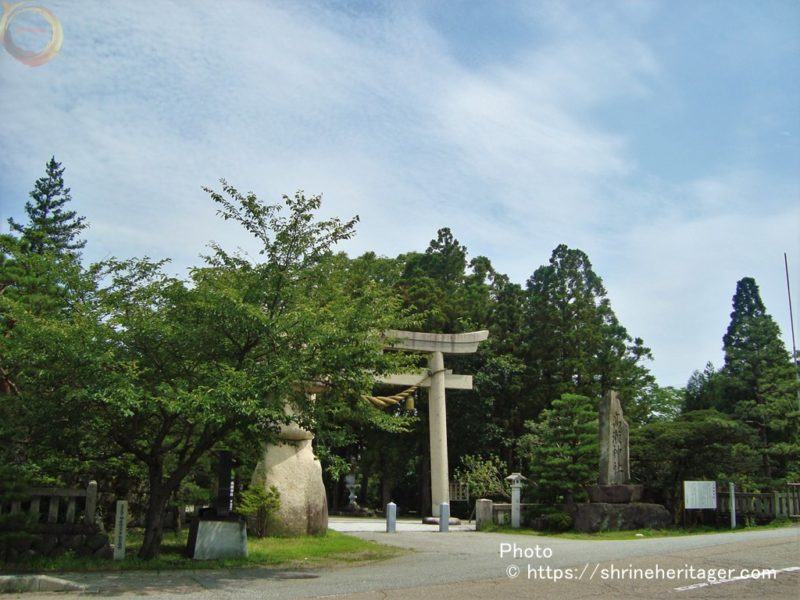
There is a historical note in front of Nino Torii and you can read it.
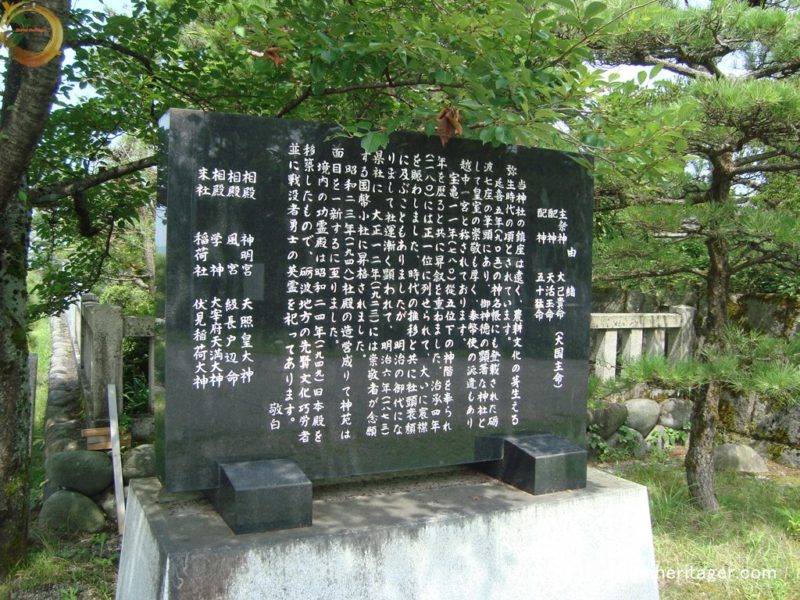

On the left is a large stone lantern. On the right is the company name "Takase Shrine".
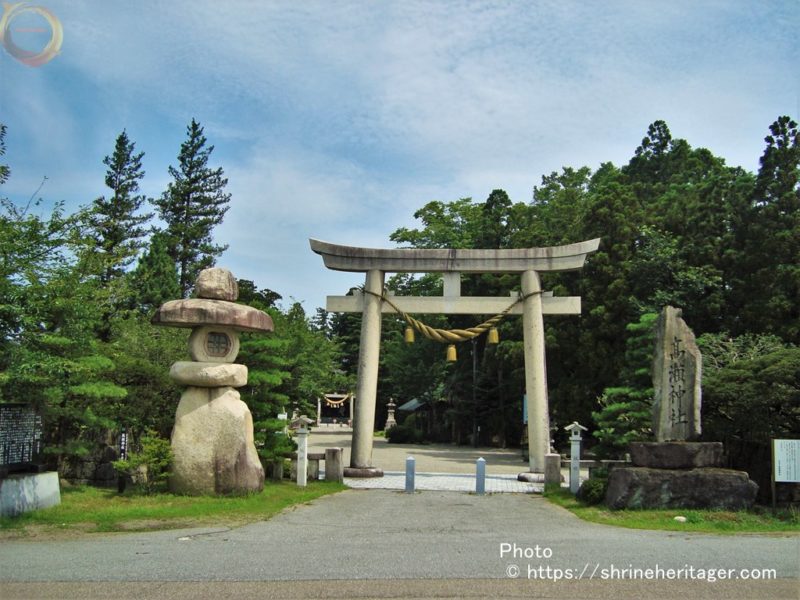
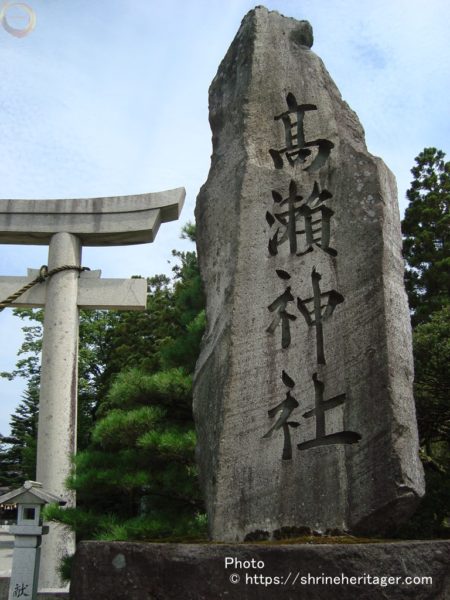
take a bowand go through the torii
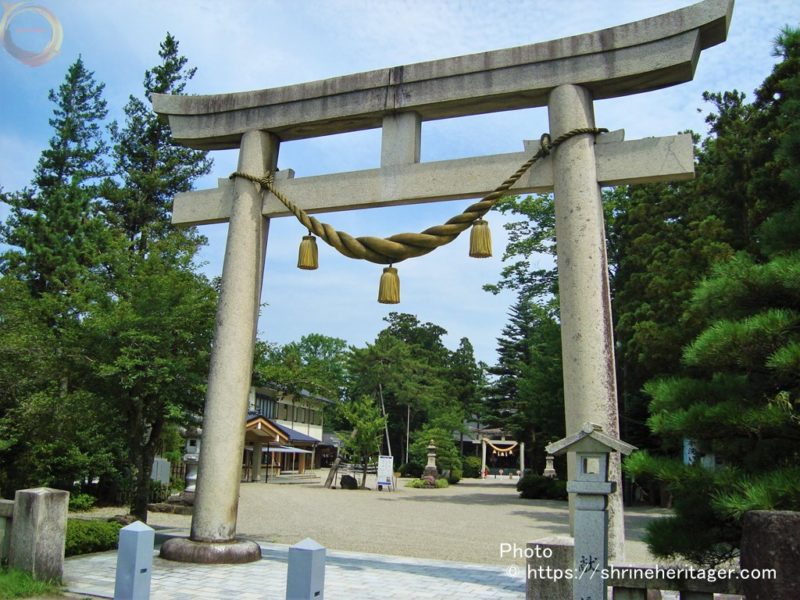
When you go down the approach that is spacious and covered with gravel, the awarding office is on your left. The "Temizuya" is on your right. There is a treasure hall behind it
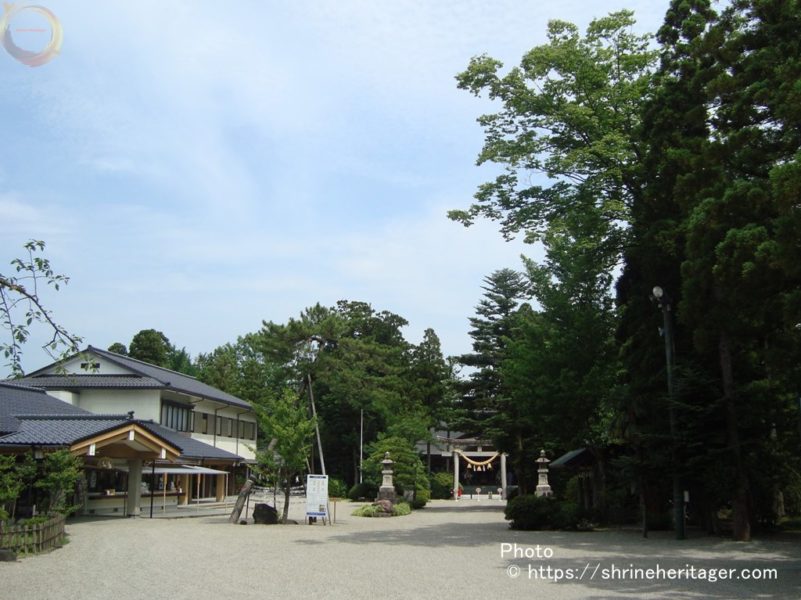
The hand basin of the mizumizuya is a natural stone that is quite fine.

For explanation of official HP
It was relocated from the Geku in 1965 under the control of the Ise Shrine. The water bowl inside is a "Senshin" sakage ground made of natural stones transported from the upper reaches of the Tadami River in Niigata Prefecture. The character "Water God" is engraved on the back of the stone.
From the official website

On the stand sign
his underwater tree became a nationally designated historic site. It is a pillar of a valuable building excavated from the Takase ruins (the site of a government office about 1,200 years ago). It is the root part of a large chestnut material divided into quarters. Since it will collapse when dried, it is stored in water.
It is a little difficult to see, but the pillars of the building excavated from the ruins are preserved in the water
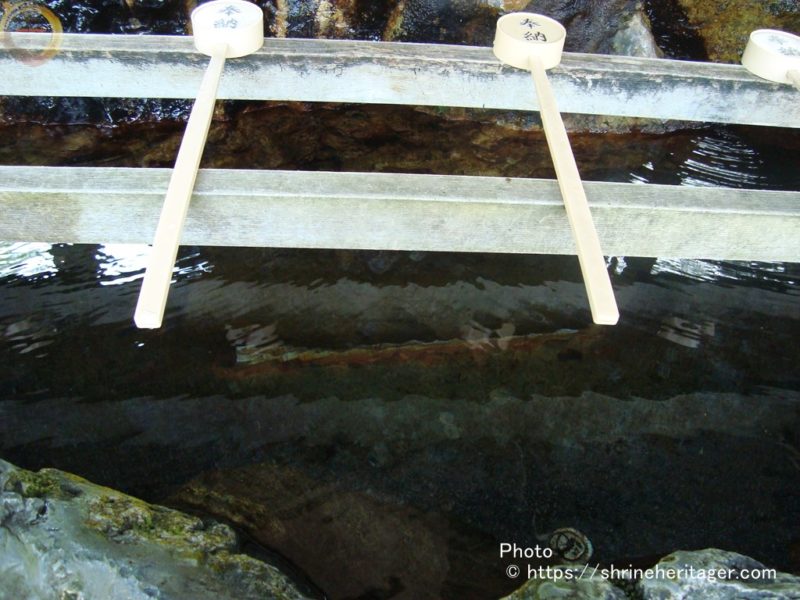
The area around the Takase site in the south of our company calls the name "Omiyaji" and
is thought to be an old shrine site that also appears in
the legend of our company's creation.
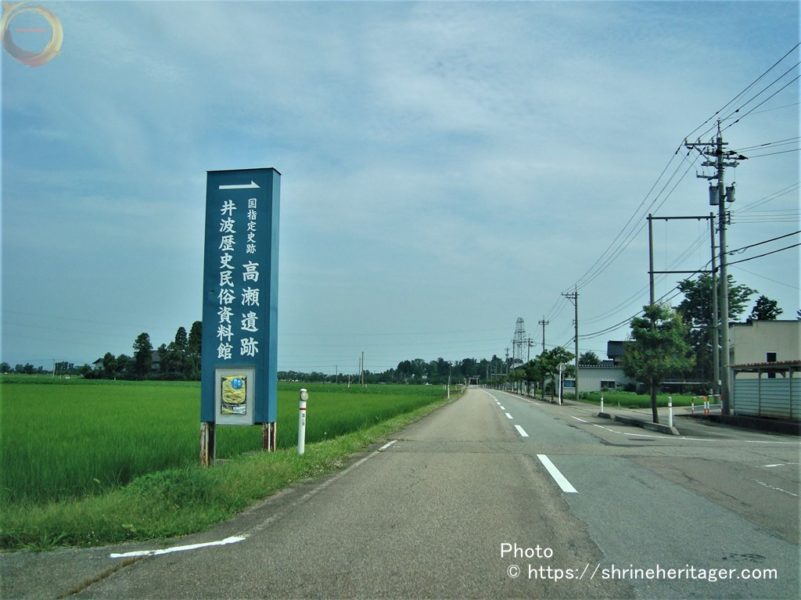
If you proceed along the spacious approach, you will find "Sanno Torii" and "Red Bridge Parapet Shinbashi."
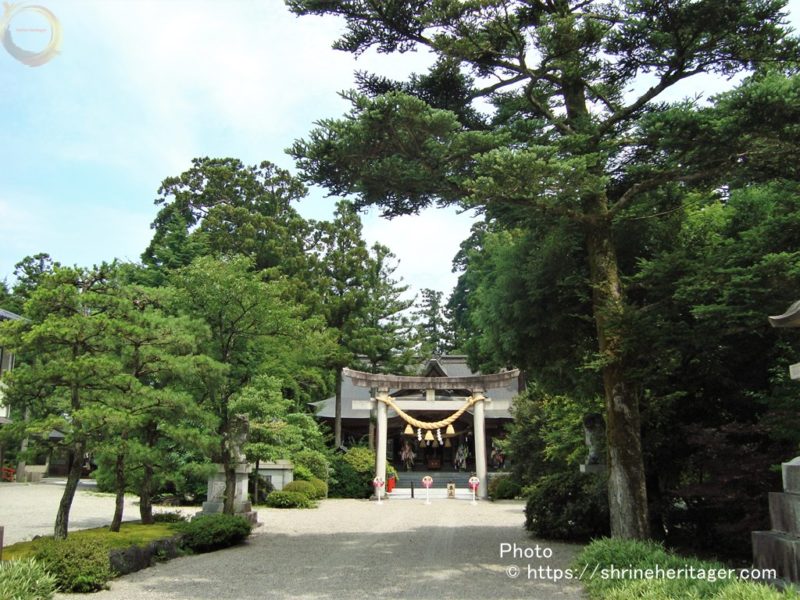
Go through the "Three torii gates" and cross the "Vermilion Parapet God Bridge" to see the front shrine in front.
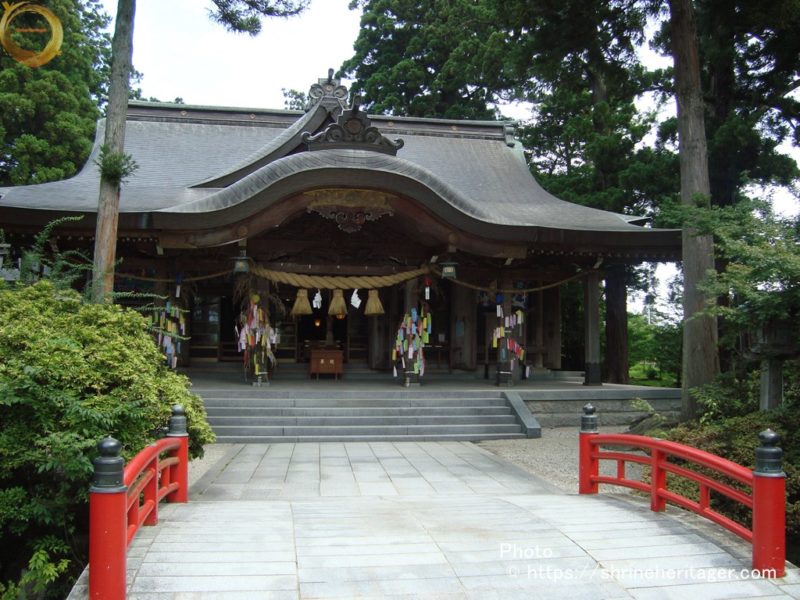
The worship hall is decorated with beautiful ropes and sculptures. In the Inami district,The worship hall is decorated with beautiful ropes and sculptures. In the Inami district, wooden sculptures such as the balustrade and lion head are popular, and it is said that this is due to the tradition of the craftsmanship here.
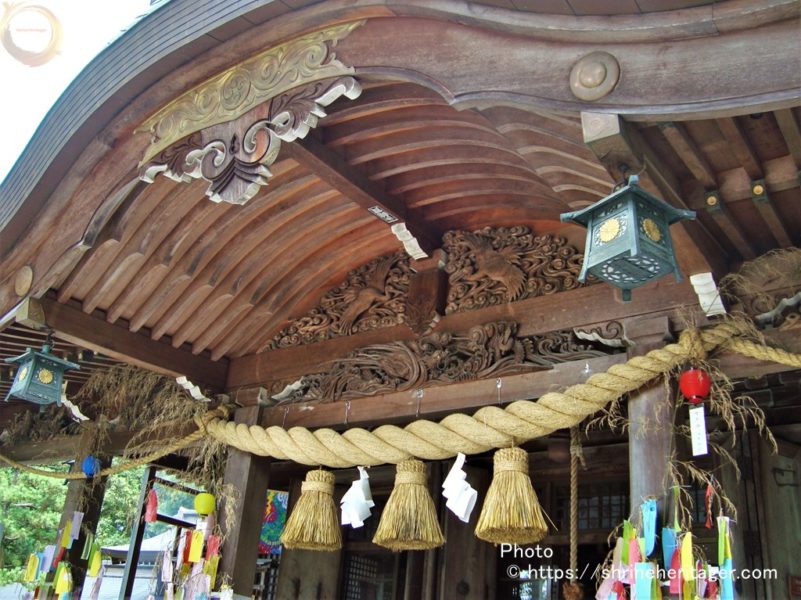
I'm going
to go to the shrine. I'm sing a
lot of money. I wish you all the best. I pray with my hands together, hitting a high hand that can't reach the god of worship who bows and settles while wishing to be in accordance with your divine power.
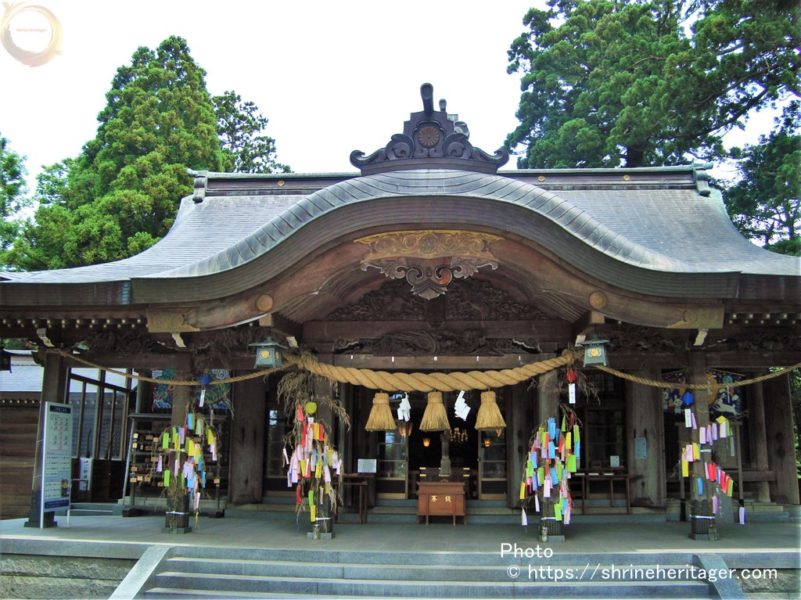
On the right side of the worship hall's offering box is "Nadeusagi" with explanations of its origin.
Derived from "Nade Usagi"
"Superpower life" and "Rabbit"
In the myth "Inaba's White Rabbit," it is said that the priest's deceased power, the Great Power, was healed of the injury of a "rabbit" who made a mistake and injured his body, and was also converted to a bad heart.
"Nade rabbit"
Because of this myth, I hope that the worshipers of the power of the Great Powers (Oguni) will be widely accepted by the worshipers.
I want to heal myself after praying in front of the worship hall. Let's pat and pray for the same place as the body part, and let's receive the patronage of the vast and vast OgamiInformation board excerpt
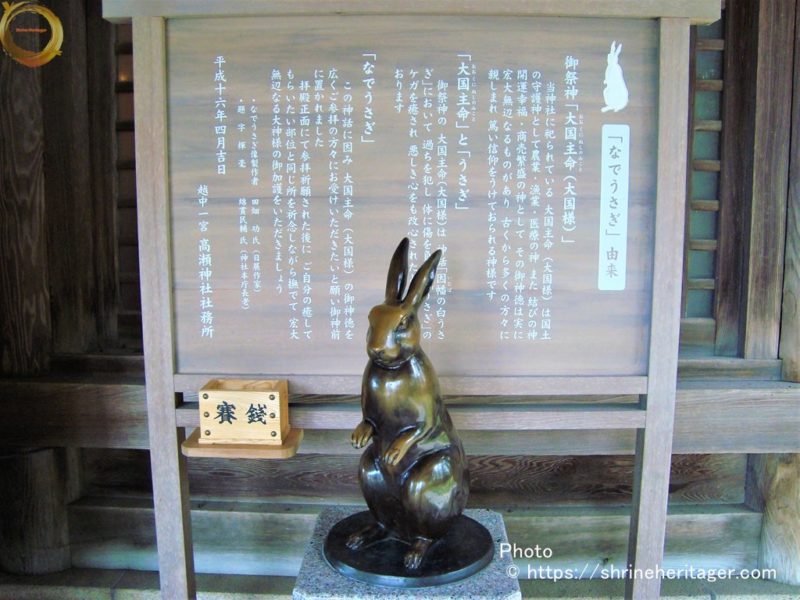
Around the main shrine and the main shrine, there are thick moss-covered cedar trees in a dense sanctuary.
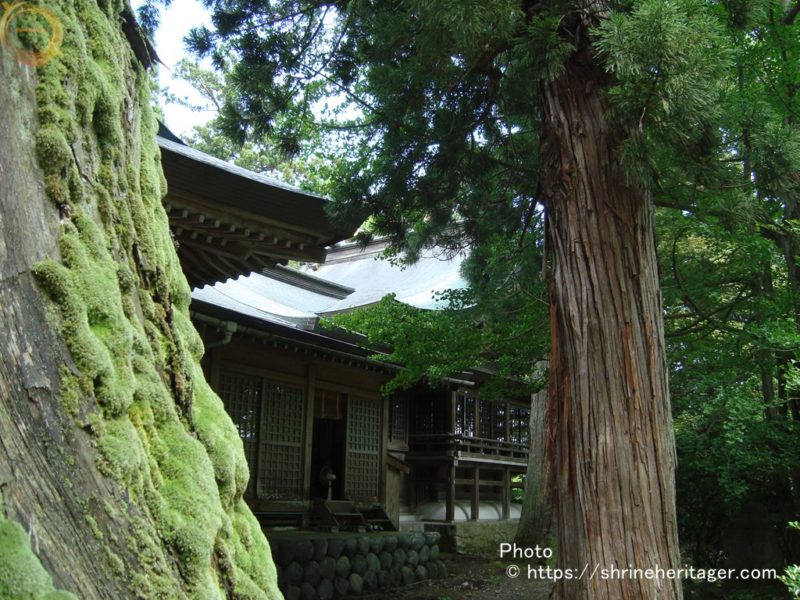
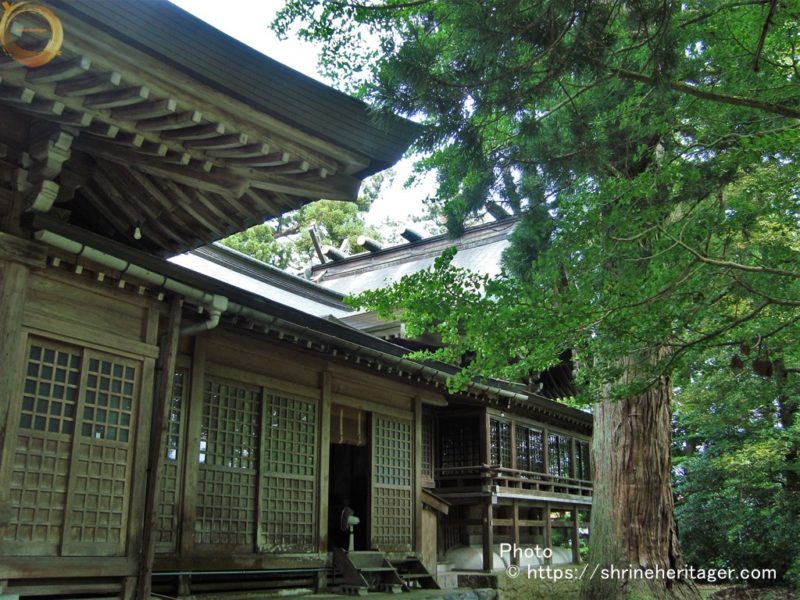
There is a fine ring with a roof in the back right of the hall of worship
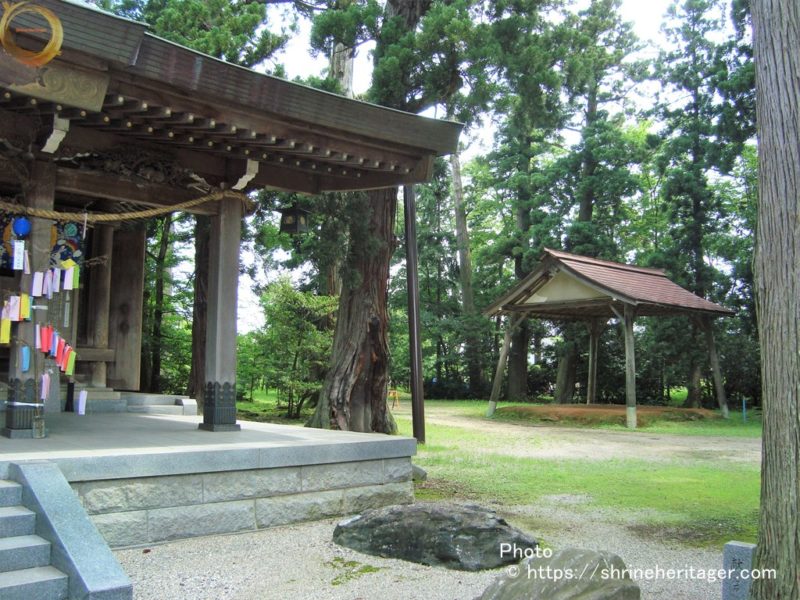
拝殿の隣には 功霊殿(koreiden)が建ちます
当社の旧本殿を活用しているとの事Next to the worship hall is the Koreiden hall. It is said that the former main hall of the Company is being used.
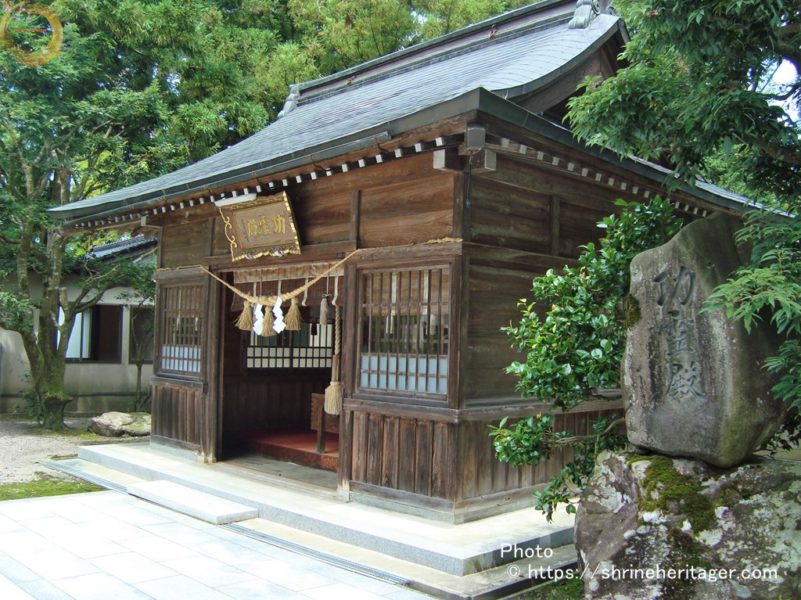
The Goryoden adjacent to the main shrine enshrines over 6,400 pillars of the spirits of the country that had been conquered from the Tonami area from the Sino-Japanese Russo-Japanese War to the Great East Asian War, as well as those who have contributed to the development of this region.
The Kōreiden main shrine is the former main shrine of this shrine, and is the result of the Inami sculpture that was erected in 1974. It is also designated as a cultural property.From the official website
The "Sazare stone" sung in the national anthem "Kimigayo" is placed on the left front of the hall of worship.

There is "Takase Inari Shrine" on the right side (east side) in front of Kamibashi
高瀬稲荷社Takase Inari is a company that has been worshiped by the spirit of Fushimi Inari Taisha, which has been a belief of people since ancient times, and is revered as a god of rich harvest and prosperous business.
From the official website
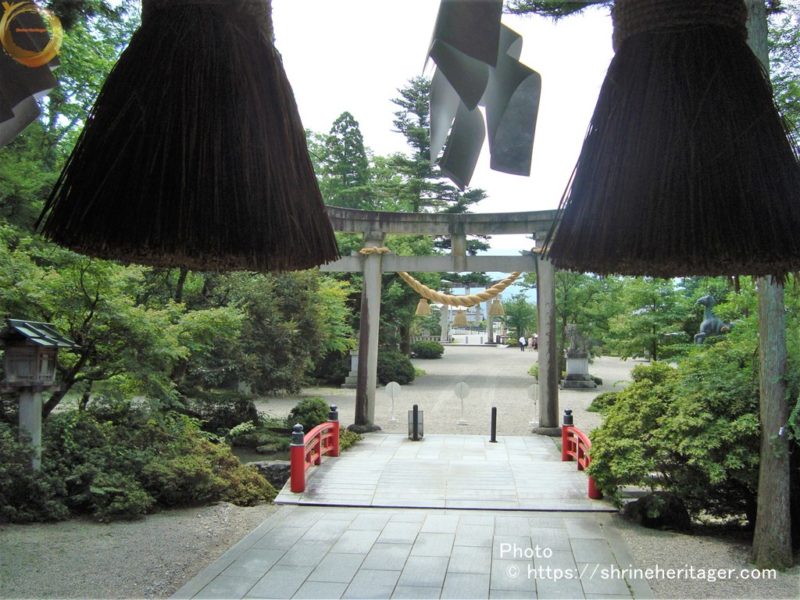
We will leave the precincts with amulet and red stamp at the awarding office
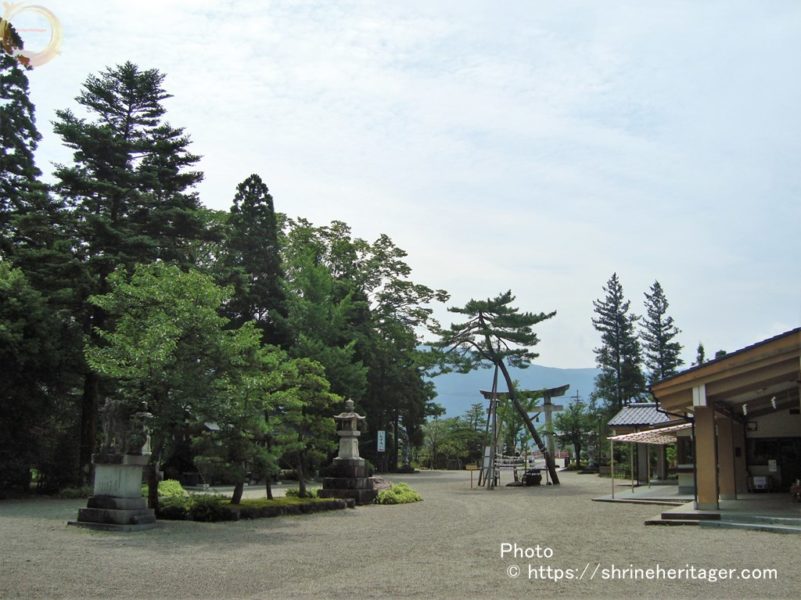
Go through the torii gate, look back, bow
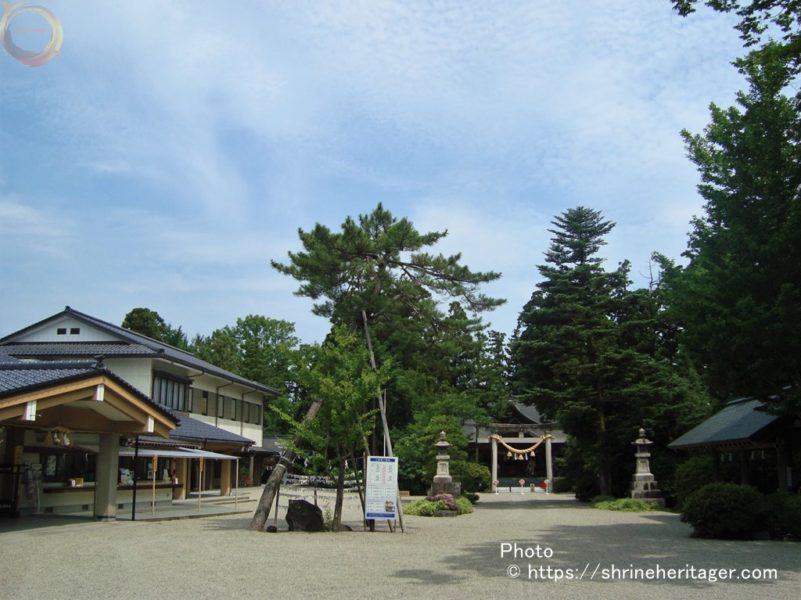
スポンサーリンク
Old tales held down to shrinks
I introduce the thing related to this shrine and the literature described.
『高瀬神社誌』Ancient paintings recorded in "Takase Shrine Magazine"
写真image 【原文参照】国立国会図書館デジタルコレクション 高瀬神社誌 出版者 高瀬神社社務所 出版年月日 大正2hoto image [See the original text] National Diet Library Digital Collection Takase Shrine Magazine Publisher Takase Shrine Office Date Taisho 2 https://dl.ndl.go.jp/info:ndljp/pid/943445
https://dl.ndl.go.jp/info:ndljp/pid/943445

『高瀬神社誌』Description of "corporation" in "Takase Shrine Magazine"
「越中国一之宮」"Etsu Chugoku Ichinomiya" is claimed by several companies ・Imizu Shrine (Nikami) , Kita Shrine , Oyama Shrine (Tateyama Gongen) , Takase Shrine (Our company)
・射水神社(二上神)
・気多神社
・雄山神社(立山権現)
・高瀬神社(当社)
Have been fighting each other for a long time
It is a long sentence, but it is described in "5.
Please read if you are interested.
【原文参照】国立国会図書館デジタルコレクション 高瀬神社誌 出版者 高瀬神社社務所 出版年月日 大正2[See the original text] National Diet Library Digital Collection Takase Shrine Magazine Publisher Takase Shrine Office Date Taisho 2 https://dl.ndl.go.jp/info:ndljp/pid/943445
https://dl.ndl.go.jp/info:ndljp/pid/943445
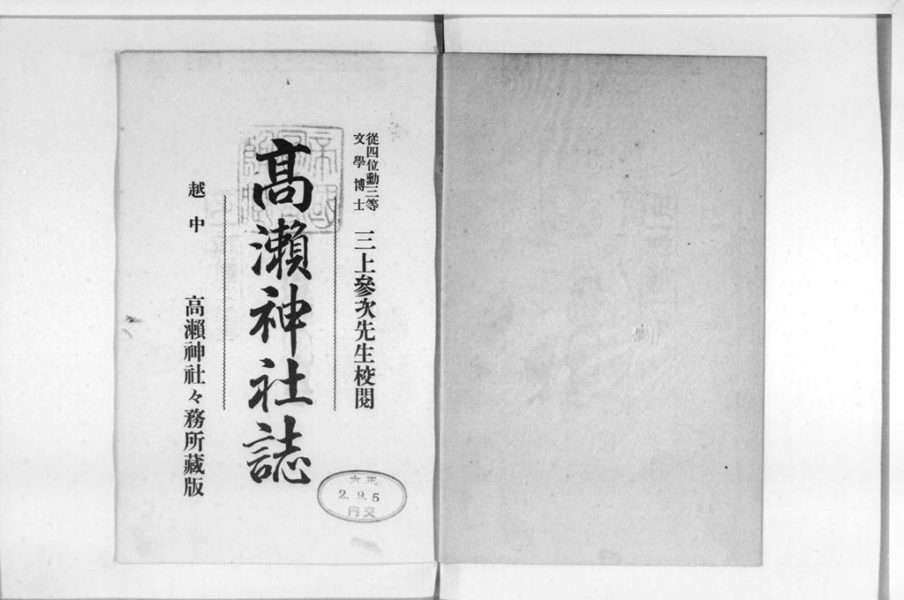

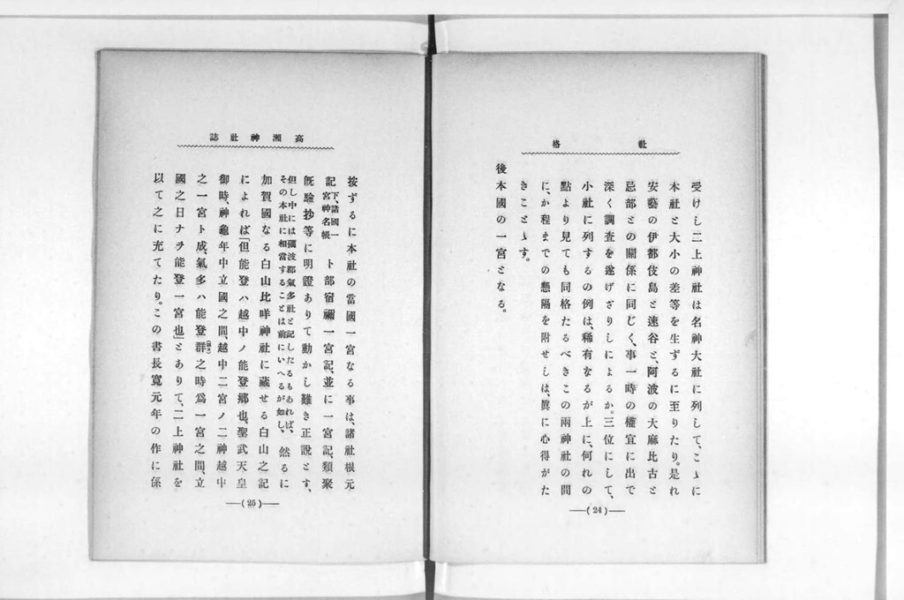
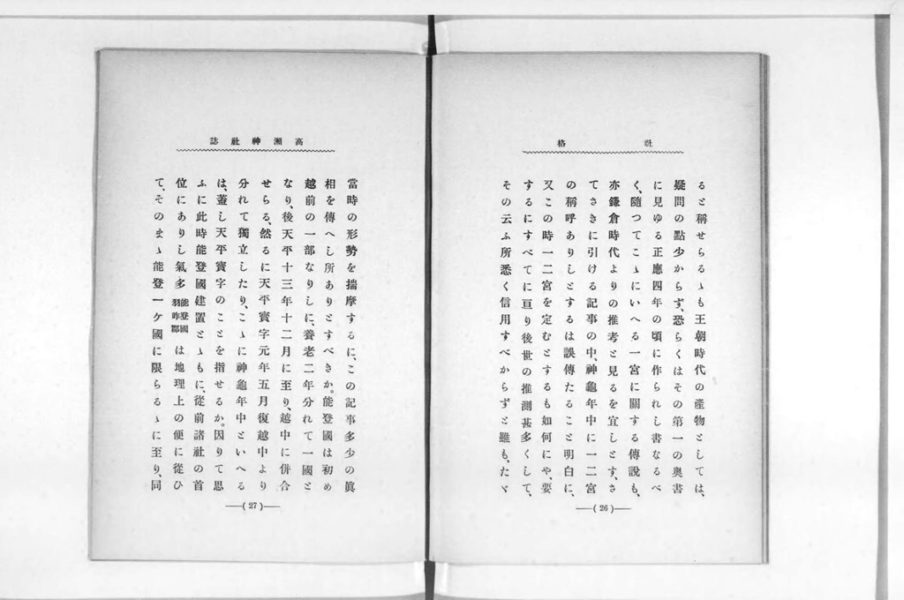

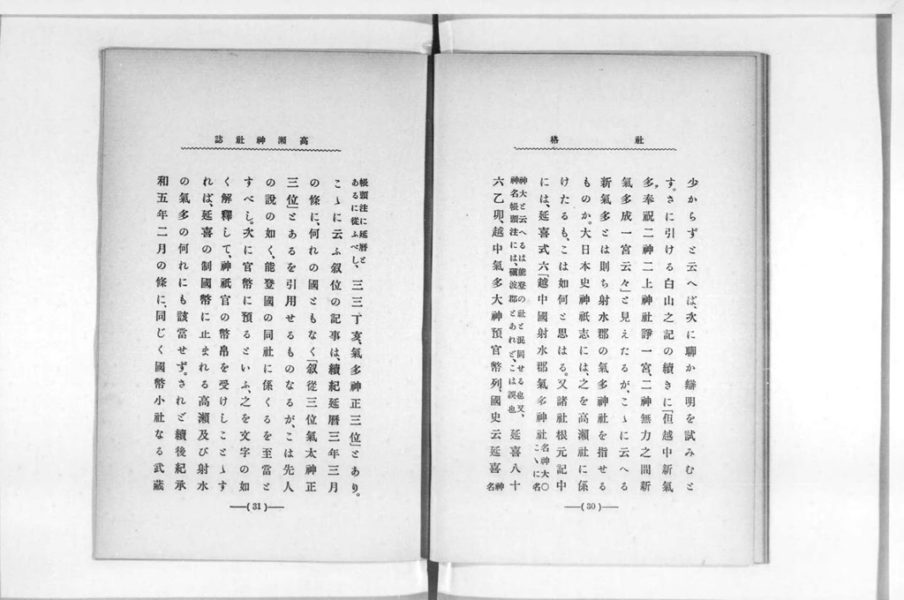
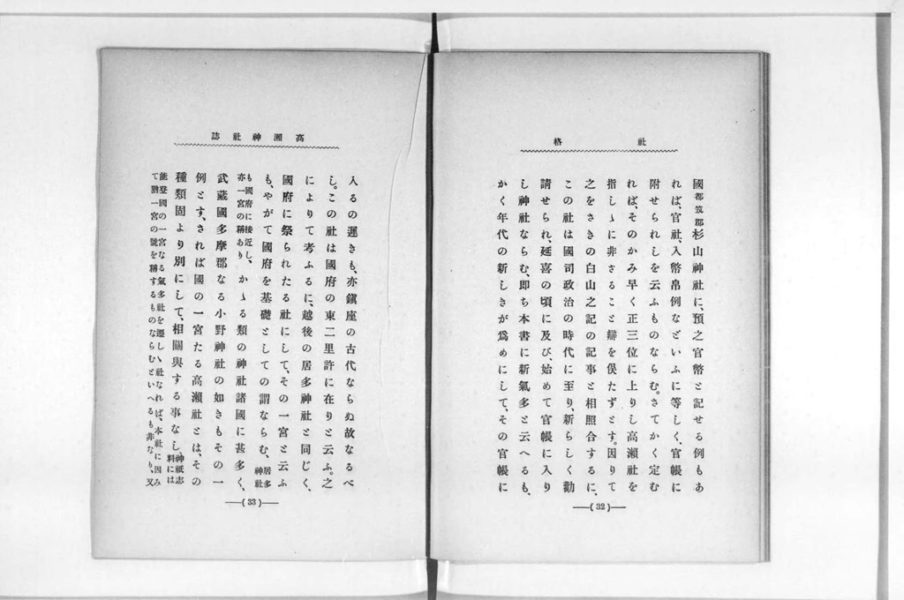
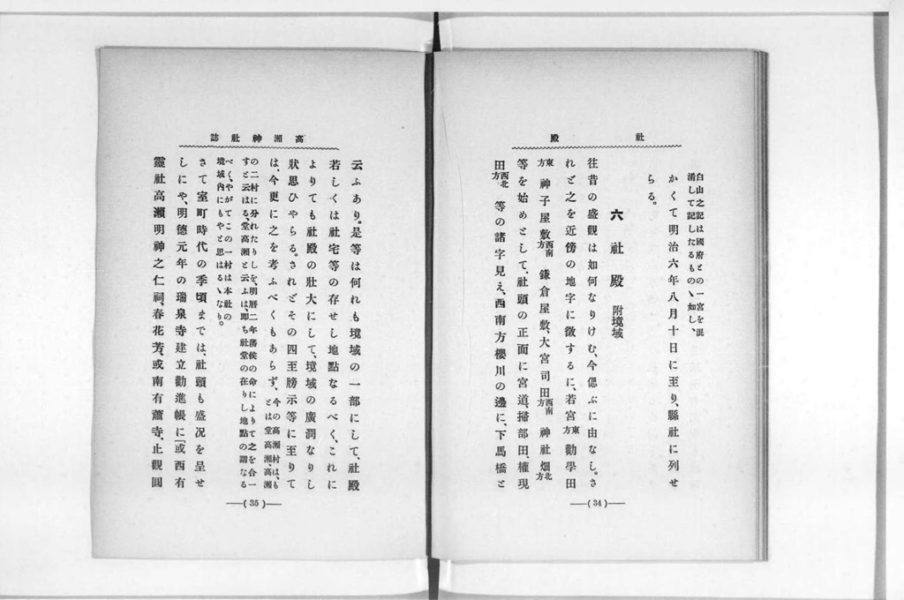
It is revered as the Ichinomiya of China, and the deity god enshrines the power of the great kingdom (Taiki Takamei). There is also the Takase ruins, which is said to have been used as a place of residence for our company.
高瀬神社(takase shrine)"Hai" at Takase shrine (90 degree bow)
